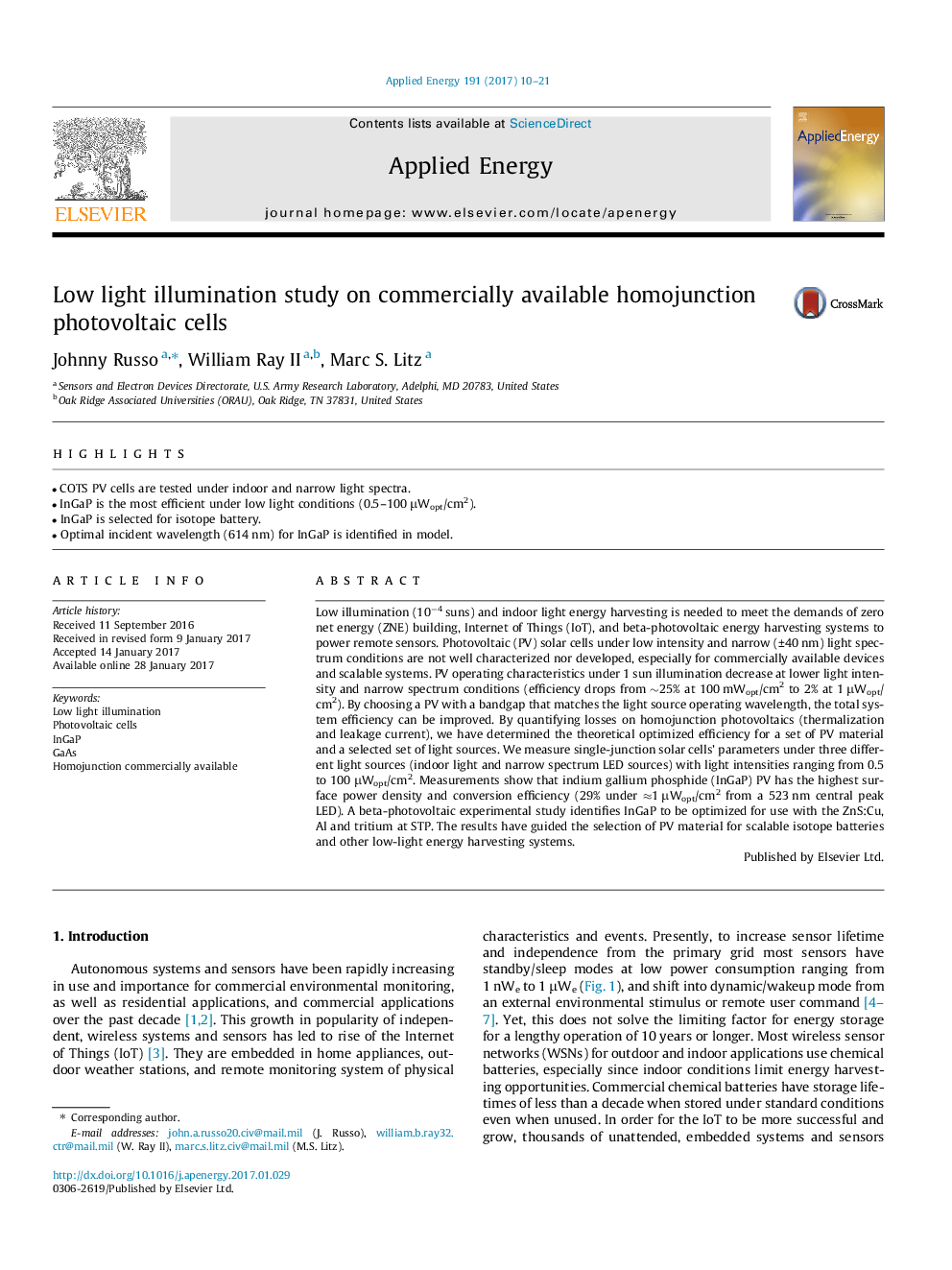| کد مقاله | کد نشریه | سال انتشار | مقاله انگلیسی | نسخه تمام متن |
|---|---|---|---|---|
| 6478713 | 1428099 | 2017 | 12 صفحه PDF | دانلود رایگان |
- COTS PV cells are tested under indoor and narrow light spectra.
- InGaP is the most efficient under low light conditions (0.5-100 μWopt/cm2).
- InGaP is selected for isotope battery.
- Optimal incident wavelength (614Â nm) for InGaP is identified in model.
Low illumination (10â4 suns) and indoor light energy harvesting is needed to meet the demands of zero net energy (ZNE) building, Internet of Things (IoT), and beta-photovoltaic energy harvesting systems to power remote sensors. Photovoltaic (PV) solar cells under low intensity and narrow (±40 nm) light spectrum conditions are not well characterized nor developed, especially for commercially available devices and scalable systems. PV operating characteristics under 1 sun illumination decrease at lower light intensity and narrow spectrum conditions (efficiency drops from â¼25% at 100 mWopt/cm2 to 2% at 1 μWopt/cm2). By choosing a PV with a bandgap that matches the light source operating wavelength, the total system efficiency can be improved. By quantifying losses on homojunction photovoltaics (thermalization and leakage current), we have determined the theoretical optimized efficiency for a set of PV material and a selected set of light sources. We measure single-junction solar cells' parameters under three different light sources (indoor light and narrow spectrum LED sources) with light intensities ranging from 0.5 to 100 μWopt/cm2. Measurements show that indium gallium phosphide (InGaP) PV has the highest surface power density and conversion efficiency (29% under â1 μWopt/cm2 from a 523 nm central peak LED). A beta-photovoltaic experimental study identifies InGaP to be optimized for use with the ZnS:Cu, Al and tritium at STP. The results have guided the selection of PV material for scalable isotope batteries and other low-light energy harvesting systems.
Journal: Applied Energy - Volume 191, 1 April 2017, Pages 10-21
